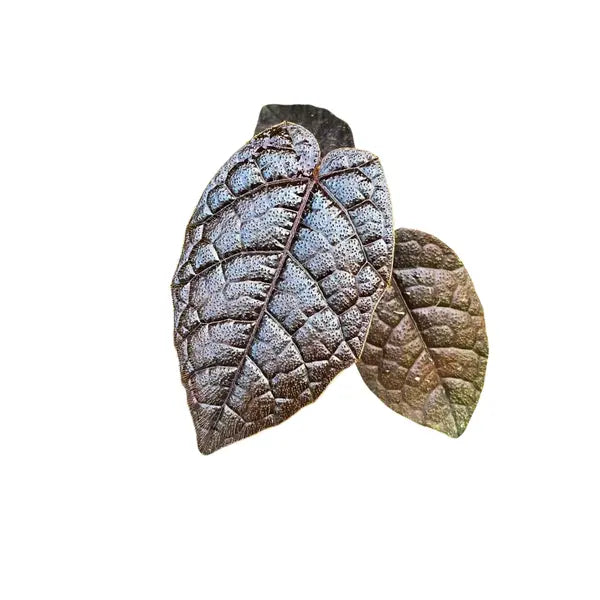
Pterisanthes Sp - Brown
Selling Size : Single Plant | Pot Included | Secure Packing | Free Shipping
Pterisanthes sp. 'Brown' is a relatively rare and unique climbing vine, often found in tropical plant collections and terrariums. As a member of the Vitaceae family, it's related to grapes (Vitis) and is native to the lowland tropical forests of places like Papua and Borneo. Its appeal lies in its fast-growing, woody stems and foliage that can vary from deep brown to coppery-red, especially in new growth.
Here is a guide to help you care for a pterisanthes sp - brown :
1. Light:
Bright, filtered light is ideal.
Avoid direct, harsh sunlight, which can easily scorch its delicate foliage.
An east-facing window or a spot with dappled light (like that cast by a sheer curtain) is perfect.
The intensity of the leaf color is often linked to the amount of light and humidity it receives.
2. Watering:
Keep the substrate evenly moist but not waterlogged.
This plant dislikes having its roots sit in soggy conditions, which can lead to root rot.
Wait until the top inch or so of the soil feels dry to the touch before watering again.
The watering frequency will depend on your environment; plants in terrariums with high humidity will need less frequent watering.
3. Humidity and Temperature:
High humidity is crucial. Aim for at least 60% humidity, and ideally 70-80% or more.
This makes it an excellent candidate for a terrarium or vivarium, where these conditions are easy to maintain.
If you are growing it in an open room, you will need a humidifier to keep the air moist enough for it to thrive.
Maintain stable, warm temperatures above 68°F (20∘C). Avoid cold drafts or sudden temperature drops.
4. Soil and Growing Medium:
Use a moisture-retentive yet airy potting mix.
A mix of orchid bark, perlite, and coco coir or a high-quality aroid mix works well. This provides good drainage while still holding some moisture.
This plant is a climbing liana in its natural habitat, so providing a climbing support like a moss pole or trellis early on can help it grow in a more controlled and healthy manner.
5. Fertilizer:
During the growing season (spring and summer), use a balanced liquid fertilizer at half strength once a month to support its vigorous growth.
Reduce or stop fertilizing during the fall and winter when the plant is not actively growing.
6. Pruning and Propagation:
You can trim back leggy vines to encourage bushier growth.
Propagation is typically done with softwood cuttings, often with the help of high humidity and bottom heat to encourage rooting.
7. Other Considerations:
Toxicity: Information on the toxicity of Pterisanthes is limited. It's best to assume it is potentially harmful and keep it away from pets and children.
Repotting: This plant can be sensitive to root disturbance. Only repot when it is truly root-bound, and be careful not to damage the older roots.

